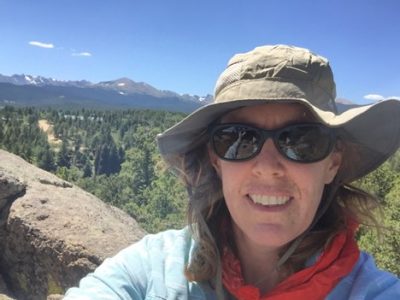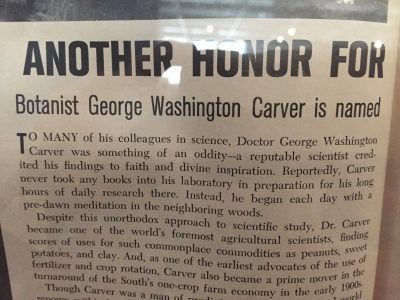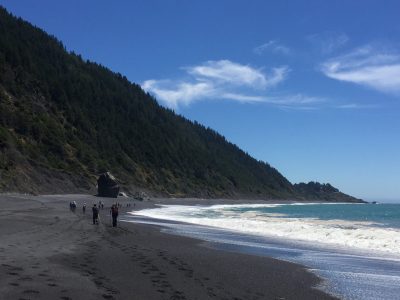by Dr. Marilyn Vogel, Lecturer in the Geosciences Department

Dr. Marilyn Vogel, on a nature meditation retreat outside of Boulder, CO with Mt. Audubon and the Ancestral Rockies in the background.
Any person involved with sustainability has likely encountered the emerging emphasis on personal ethics and well being as important practices for sustaining ourselves and our world. This emphasis appears in communications, visuals, and even major initiatives like the UN Sustainable Development Goals. Like “innovation” and “diversity” however, “wellness” has become a buzzword for diverse phenomena such that it has become difficult to define what wellness is for different people in different circumstances. A good functional definition is provided by the sustainability compass, in which the westerly ‘W’ stands for Wellness. In this metaphor, Wellness is a direction that helps us orient our lives and the work we do in the world. But like knowing which way is west, wellness still does not tell us exactly which roads or paths to take in a specific territory like our jobs, relationships, studies, or how to address large scale issues like climate change. Although it is currently enjoying a flowering of popularity, mindfulness is an ancient set of practices or strategies for letting go of the suffering in our lives (being well) and for taking better care of the world. For these reasons, mindfulness has become a ubiquitous element of the sustainability movement, and interestingly, sustainability has also become a core element of the mindfulness movement.

Newspaper clipping on display at the Tuskegee Institute National Historical Site.
The questions of what mindfulness has to offer sustainability, and how did sustainability become a core mindfulness practice are far too broad for a single blog post. Briefly, I would summarize this state of affairs as arising from the fact that mindfulness helps us recognize our core values and the importance of living those values. Living according to our values helps give our lives meaning, and meaning is a basic human need, like food and shelter. When we tap into meaning through our personal ethics and our basic needs are met, what arises is a desire to protect what is wild and beautiful (e.g., forests, oceans, loved ones, ourselves, creation). Many people have said it much better than I could ever say it, including some of the originators of the sustainability movement like John Muir and George Washington Carver. George Washington Carver? Yes. As can be observed from a newspaper clipping on display at the Tuskegee Institute National Historical Site (just a few miles south of Auburn), the scientist, naturalist, and entrepreneur George Washington Carver began every morning by meditating in the woods.
While I wish I was a world renown botanist, author, and leader like Carver, I came to meditation through different channels. When I was about ten years old, I attended a camp called Nature Camp where they took us on hikes around the George Washington National Forest in Virginia’s Blue Ridge Mountains. One day, we had stopped by a stream one to rest and take our lunch. I sat on a rock, looked at the water, and then strangely, I was overcome by a pronounced and protracted sense of peace which I never forgot. Later, when I was in college, I had trouble focusing and figuring out who to hang out with. In the 90’s with the economy not great, I had anxiety about my future. I also lost a parent and two beloved grandmothers in my twenties. While completing my degrees in economics and Earth Sciences at MIT and Stanford, respectively, I learned about the seeming inevitability and the scale at which humans were destroying things like streams and forests and even the very atmosphere itself. Amidst all the uncertainty, I became interested in different cultures and world views. My two alma maters were very diverse and had a lot to offer in those areas. I always remembered the episode by the creek and figured I ought to try to get back to that, since there might be something there. This all led me to join several meditation groups in Palo Alto and over the next 20 years, I made my way all over the U.S. to do different long residential meditation retreats and even spent a month in northern Thailand living at a monastery. When I interviewed for my present job at Auburn, my department actually interviewed me while I was on a six-week long, silent meditation retreat at the Insight Meditation Society (IMS) in Barre, MA. It was good test of my future employer for us to establish that they valued personal wellness and respected my need to cultivate interests outside of the traditional academic sphere. I will always appreciate IMS too for letting me ‘break silence’ and use their office computer to do the interview.
I came to Auburn and joined the faculty, where I’ve taught basic science, Earth history, and Sustainability. But all was not so well in the so-called loveliest village on the Plains. There was something missing, namely a good strong, weekly, nature-based meditation community. Already being an educator, the idea of facilitating or teaching meditation did not thrill me. However, in 2018, a teacher with whom I’d sat for many years started an Environmental Chaplaincy training program. In this program, (which I joined as soon as I found out about it), we learned how to help people connect with inner and outer nature. With the help of the late Nanette Chadwick, I taught a course through the Academic Sustainability Program based on the Eco-chaplaincy pedagogy called “Personal Resilience and Sustainability”. After graduating and becoming one of the first credentialed Environmental Chaplains, I found that the community of other practitioners in the program had been so important to me, I joined another 2-year training program this time led by Jack Kornfield and Tara Brach. This program requires me to teach two classes in meditation, the second of which is now being offered at the Auburn Arboretum with the much appreciated support of the Auburn Office of Sustainability and other Auburn units. (The first course was taught through the Osher Lifelong Learning Institute or OLLI, which now has its own weekly meditation group. Check out their website for details.)

Hiking out of a 2-week, silent, nature-based meditation retreat held in the King Range Wilderness of northern California in 2019.
Meditation at the Arb occurs every Thursdays from 5-6 PM at the Upper Pavilion. No experience is necessary and beginners are welcome. Just try to bring something to sit on (yoga mat, towel, blanket, folding chair). I try to bring extra sitting things so don’t let lack of gear keep you away. I give a ~30 minute guided meditation with instructions for different experience levels, and then ring a bell and we share out questions, issues, perceptions. Community is core practice and so we use the East Bay Meditation Center’s Community Agreements for Multicultural Interactions. All are welcome; so far we have both grad and undergrad, staff, faculty, and emerita, but Auburn is a land grant university so all are welcome. Follow us on insta as @arb_mindfulness and / or email mbv0008@auburn.edu with questions or to be added to our mailing list.
Learn about the SDGs & AU and our contributions related to this post.





